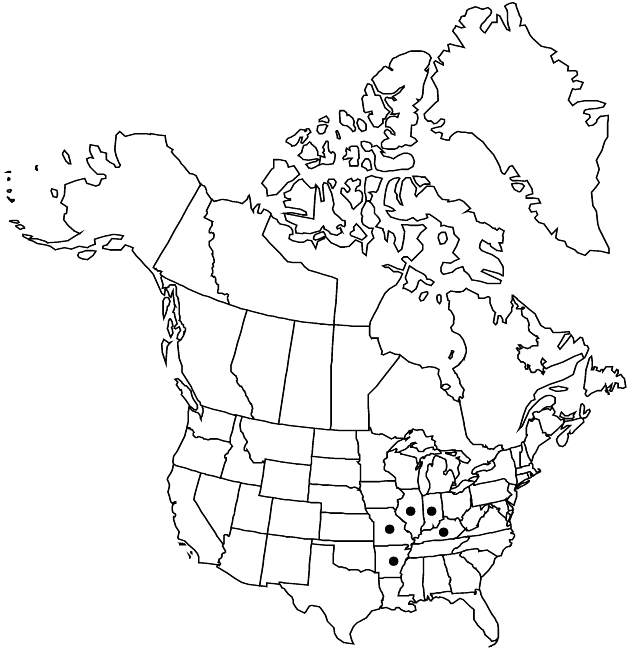Solidago buckleyi
Fl. N. Amer. 2: 198. 1842.
Plants 60–120 cm; caudices thick, woody, roots thick. Stems 1–5+, sparsely to moderately short strigose or villous. Leaves: basal withering by flowering, petiolate, smaller to much smaller than cauline, blades oblanceolate, margins serrate; cauline sessile, blades elliptic-lanceolate or -oblanceolate, mid 80–140 × 2.5–4 mm, distally reduced, usually membranous, bases tapering, attenuate, margins sharply toothed along much of length to nearly entire, ciliate, abaxial faces short-pilose along small and large nerves, adaxial short-pilose along larger nerves. Heads 5–160 (2–10+ more per short branch cluster), in narrowly elongate paniculiform arrays, branches usually 1–6 cm (much longer in damaged plants, sometimes 1–3 proximal branches much elongated in undamaged plants), ascending and bearing short terminal racemiform or paniculiform clusters. Peduncles 1–6 mm, moderately canescent; bracteoles linear to lanceolate. Involucres campanulate, 4.5–5.5 mm. Phyllaries in ca. 3 series, strongly unequal, erect to slightly squarrose-tipped, lanceolate, apices acute, glabrate, sparsely to moderately, finely stipitate-glandular. Ray florets 6–8; laminae 3–4 × 1–1.5 mm wide. Disc florets 8–14; corollas 4–5 mm, lobes ca. 1.5 mm. Cypselae (reddish brown) 2–3 mm, glabrous; pappi 4–5 mm.
Phenology: Flowering Sep.
Habitat: Open oak woods, ridges and slopes, bluffs
Elevation: 100–300 m
Distribution

Ark., Ill., Ind., Ky., Mo.
Discussion
Solidago buckleyi is an uncommon species of mesic woods, most variable in the size and number of teeth on the large mid cauline leaves. Once seen, usually it is not easily confused with S. petiolaris. Reports from farther east are for plants of S. petiolaris.
Selected References
None.